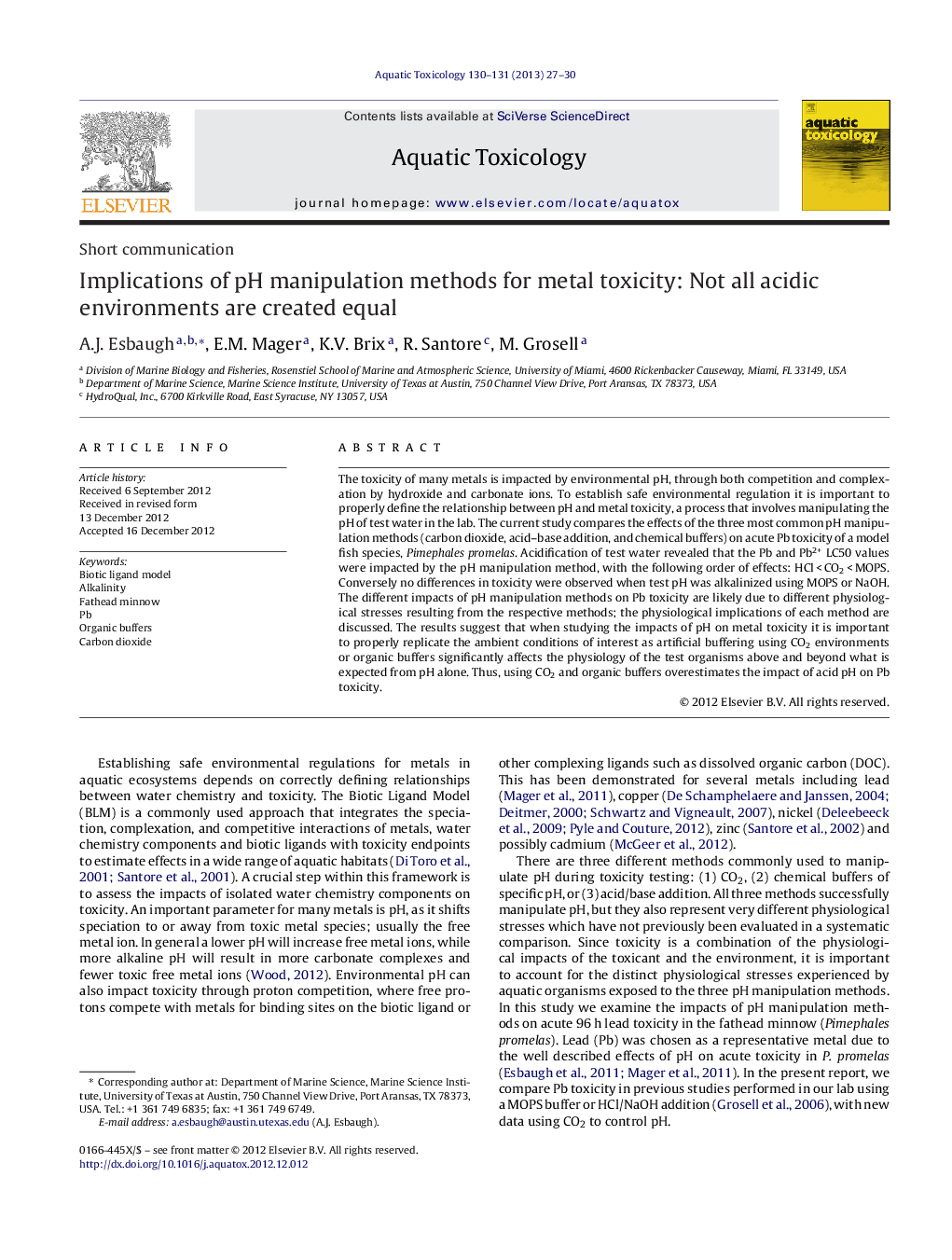| کد مقاله | کد نشریه | سال انتشار | مقاله انگلیسی | نسخه تمام متن |
|---|---|---|---|---|
| 6382740 | 1625967 | 2013 | 4 صفحه PDF | دانلود رایگان |
عنوان انگلیسی مقاله ISI
Implications of pH manipulation methods for metal toxicity: Not all acidic environments are created equal
دانلود مقاله + سفارش ترجمه
دانلود مقاله ISI انگلیسی
رایگان برای ایرانیان
کلمات کلیدی
موضوعات مرتبط
علوم زیستی و بیوفناوری
علوم کشاورزی و بیولوژیک
علوم آبزیان
پیش نمایش صفحه اول مقاله

چکیده انگلیسی
The toxicity of many metals is impacted by environmental pH, through both competition and complexation by hydroxide and carbonate ions. To establish safe environmental regulation it is important to properly define the relationship between pH and metal toxicity, a process that involves manipulating the pH of test water in the lab. The current study compares the effects of the three most common pH manipulation methods (carbon dioxide, acid-base addition, and chemical buffers) on acute Pb toxicity of a model fish species, Pimephales promelas. Acidification of test water revealed that the Pb and Pb2+ LC50 values were impacted by the pH manipulation method, with the following order of effects: HCl < CO2 < MOPS. Conversely no differences in toxicity were observed when test pH was alkalinized using MOPS or NaOH. The different impacts of pH manipulation methods on Pb toxicity are likely due to different physiological stresses resulting from the respective methods; the physiological implications of each method are discussed. The results suggest that when studying the impacts of pH on metal toxicity it is important to properly replicate the ambient conditions of interest as artificial buffering using CO2 environments or organic buffers significantly affects the physiology of the test organisms above and beyond what is expected from pH alone. Thus, using CO2 and organic buffers overestimates the impact of acid pH on Pb toxicity.
ناشر
Database: Elsevier - ScienceDirect (ساینس دایرکت)
Journal: Aquatic Toxicology - Volumes 130â131, 15 April 2013, Pages 27-30
Journal: Aquatic Toxicology - Volumes 130â131, 15 April 2013, Pages 27-30
نویسندگان
A.J. Esbaugh, E.M. Mager, K.V. Brix, R. Santore, M. Grosell,